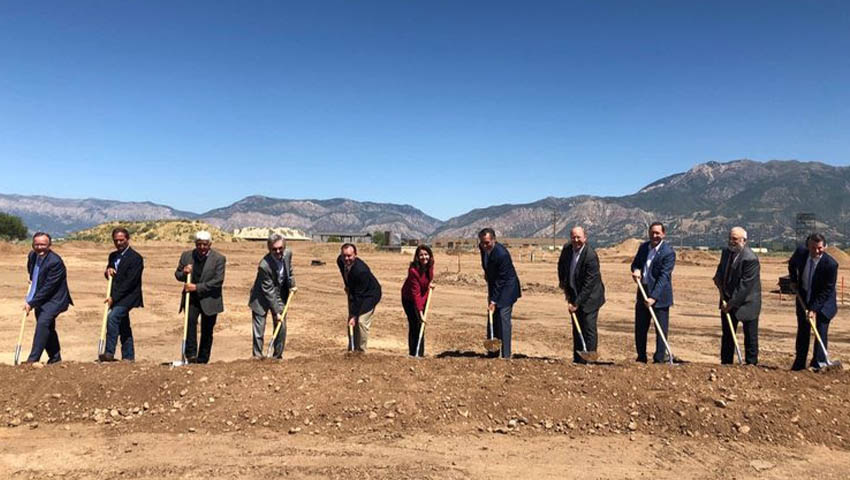Northrop Grumman has celebrated the start of construction for a new facility near Hill Air Force Base in Utah, to serve as a future headquarters for its workforce and the nationwide team supporting the Ground Based Strategic Deterrent (GBSD) program.
Kathy Warden, Northrop Grumman chairman, chief executive and president, was joined by senator Mike Lee, senator Mitt Romney, Congressman Rob Bishop, Congressman Chris Stewart and local community leaders to break ground on the facility and demonstrate the company’s commitment to supporting the US Air Force’s strategic deterrence mission.
"Modernising the current ICBM system is a national security priority, and we are proud to be here today to reinforce our commitment to the US Air Force on GBSD and our readiness to deliver on this critical mission. For more than 60 years, Northrop Grumman has supported the Air Force’s ICBM programs, from our nation’s earliest missile systems to today’s sustainment work, much of which is performed here in Utah," Warden explained.
Senator Lee welcomed the groundbreaking ceremony and Northrop Grumman's investment in Utah saying, "It was an honour to take part in today’s groundbreaking ceremony for Northrop Grumman’s GBSD program office. Northrop Grumman has long played a vital role in providing one of our country’s most important deterrent programs, and in contributing to a thriving economy and a significant source of jobs in northern Utah. This new GBSD office will not only further benefit the state of Utah, but will strengthen the security of our nation as a whole."
Former presidential candidate, Senator Romney echoed Senator Lee's comments, saying, "We are also bringing 2,500 high-skill, high-paying jobs to Utah, which will have a lasting and positive impact on our state’s economy. I appreciate the commitment of Northrop Grumman to modernising the United States’ nuclear triad and their continued support of Hill Air Force Base."
Congressman Bishop explained, "Utah has played a key role in supporting ICBM programs dating back to the 1950s. The groundbreaking of this Northrop Grumman facility marks the start of a brand-new chapter in Utah’s support of the nuclear triad. As threatening technologies advance in nations around the world, particularly amongst our would-be adversaries, it is crucial that these programs advance here at home. There is no better place than in Utah for the hard work to be done."
"Utah and Hill Air Force Base play a vital role in the defence of our country. This project will add thousands of jobs to Utah’s economy while developing crucial national security technology. I welcome Northrop Grumman’s addition to our great state," said Congressman Chris Stewart.
Northrop Grumman is currently the largest security and defense company in Utah with more than 5,100 employees across the state, primarily located in Bacchus, Clearfield, Ogden, Promontory and Salt Lake. The new facility is scheduled to be completed by mid-2020.
Warden added, "We look forward to this facility serving as home to a diverse and talented workforce, dedicated to developing this next-generation capability that will advance the strategic deterrence mission for the US. Our world-class, nationwide team is ready to support the GBSD program through the 21st century."
The USAF’s GBSD is the weapon system replacement for the ageing LGM-30 Minuteman III intercontinental ballistic missile system. GBSD represents the modernisation of the ground-based leg of the nuclear triad.
The Minuteman III first became operational in the early 1970s. While certain components and subsystems have been upgraded, most of the fundamental infrastructure in use today is the original equipment supporting more than 50 years of continuous operation.
On 21 August 2017, Northrop Grumman was one of two companies awarded a Technology Maturation and Risk Reduction contract for the new GBSD weapon system program.
The Air Force is focused on developing and delivering an integrated weapon system that will meet the combatant commander’s current requirements, while having the adaptability to affordably address changing technology and emerging threats through 2075.








